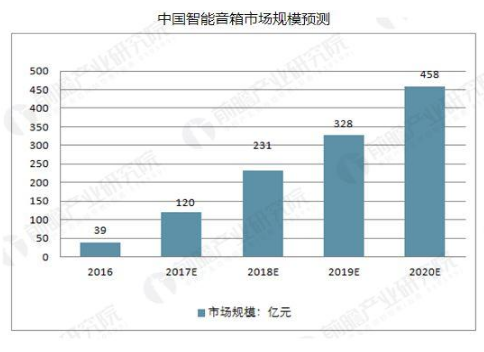The smart speaker is a product of a speaker upgrade. It is a tool for home consumers to use voice to access the Internet, such as on-demand songs, online shopping, or understanding the weather forecast. It can also control smart home devices, such as opening curtains and setting Refrigerator temperature, warming up the water heater in advance, etc.
Last year was a year when smart speakers broke out in the domestic market. After the "hundred-box war", entrants are still intensively launching new products. Smart speakers are expected to continue their strong momentum this year.
However, with the influx of giants such as BAT and a large number of smart hardware manufacturers, smart speakers have already entered the price reduction channel, and there is a growing trend. At this stage, although smart speakers do not become the “standard equipment†of families in China like the United States, the market is developing quite rapidly.
According to the "China Smart Home Equipment Industry Market Outlook and Investment Strategy Planning Report" data from the Qianzhan Industry Research Institute, the retail volume of China's smart speaker market reached 1.65 million units in 2017, and the monthly average zero sales showed a clear upward trend. It is expected that the market size of China's smart speakers will continue to grow in 2018, reaching 5.88 million units.

Of course, the hot smart speaker market is still exchanged for cost-effective and preferential subsidy strategies, but price wars like this seem to be indispensable. Because in China, to seize the market, price wars seem to be effective forever.
The large number of promotions and price cuts currently in the market, that is, the price wars fought by giants, may be mainly for two purposes. On the one hand, cost subsidies can be used to move volume relatively faster. After all, low-priced products are the weapon to seize market share.
On the other hand, there are many smart speaker products that are just starting out, which need to collect user data to understand user needs and optimize the product experience. This can basically be regarded as a "make up lesson."
For these giants, once a sufficient user scale is formed, it will not only enhance the right to speak to the supply chain and developers, but also achieve rapid update and iteration at the product level, thereby further building their own barriers to competition.
In the final analysis, the current domestic smart speaker market is still in the early stages of development. The top priority for manufacturers is to cultivate user habits and enhance user awareness, so as to jointly promote the popularization of smart speaker concepts and continue to make this "cake" bigger. The price reduction brought about by the price war can stimulate consumers' desire to purchase smart speakers, and it has a certain role in promoting the early development and subsequent popularization of the smart speaker market.
"Smart speakers" include three levels: the bottom layer is hardware parameter technology, such as wake-up rate, wake-up distance, etc.; the middle layer is application services, mainly including content and smart home systems; the upper layer is intelligence, covering natural language recognition, interaction, and intelligence Management, personalized recommendation, etc.
At present, it seems too early to talk about the overall ecology of smart speakers, and the underlying technology it carries is not yet perfect. Most smart speaker products on the market currently have problems such as poor far-field recognition, high false wake-up rates, unstable continuous dialogue functions, poor semantic understanding, and poor sound quality. The seemingly popular smart speaker industry is facing many challenges such as weak innovation capabilities, poor product experience, insufficient content and functions, and low user awareness.
While the subsidies and price reduction strategies adopted in the industry can lower the purchase threshold for consumers, it also means that the cost is limited and strict control. After all, bringing a good user experience to users is the basic quality that any product should have, and for the smart speaker market that seems to have a bright future, a good product and user experience are even more needed.
Pin Header Connector,A-Type Dual Base Pin Header Connector,A-Type Single Base Pin Header Connector,Four Row R/A Pin Header Connector
Dongguan Yangyue Metal Technology Co., Ltd , https://www.yyconnector.com